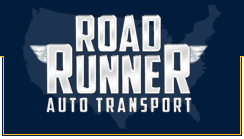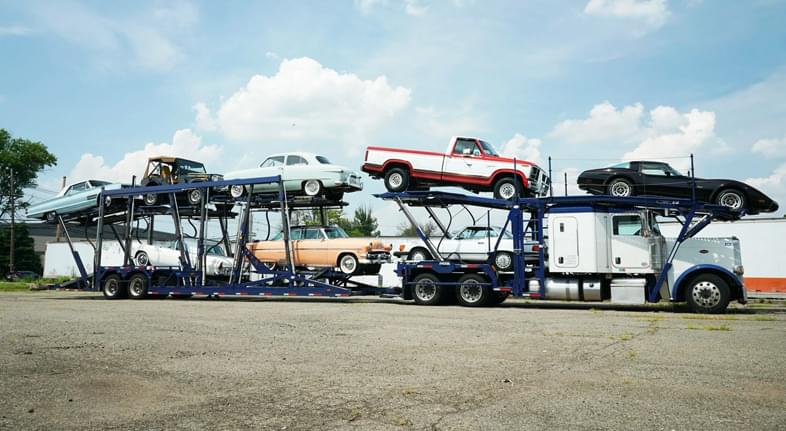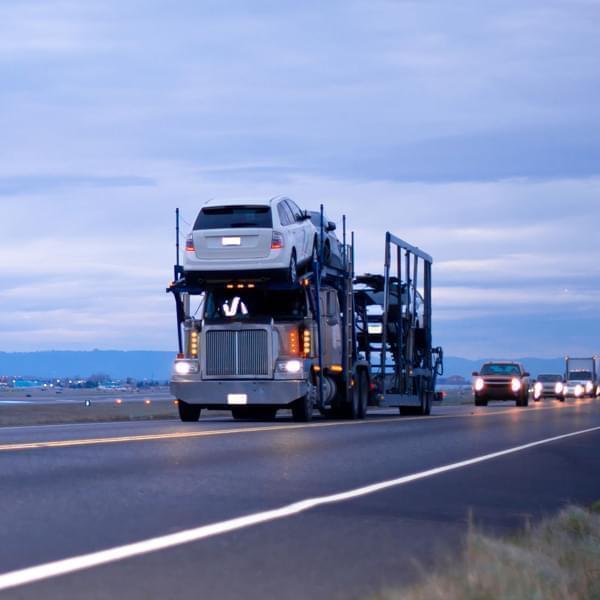Navigating the intricate process of safely transporting a classic vehicle can be a daunting task, particularly if you're not familiar with the unique considerations that classic cars entail. Each step requires careful planning, from understanding the vehicle's value and unique care requirements to selecting the best auto transport service. Whether you are shipping locally or shipping your car across the country, RoadRunner Auto Transport has your back.
Understanding Classic Car Transportation
Unlike modern cars, transporting classic and antique vehicles requires special care and handling. Their age and rarity mean extra steps are necessary to protect the car's value and your investment. The car's running condition, its size/weight limitations, insurance coverage, and types of enclosed shipping carriers are key factors to consider.
Collectors also need to evaluate climate control and suspension adjustments. Longer transit days are also required for vintage and exotic car transport, which cannot withstand long interstate speeds. With some antique cars, transport by covered vehicle shipping carriers may be the only safe means to prevent damage en route.
Age and Wear Factors
Classic and antique cars are not designed for rigorous journeys. Their outdated suspension systems can also only handle minimal speeds and road stresses. Antique tires, glass, trim, and furniture wear easier, so specialized handling keeps them protected across long distances.
Insurance Requirements
Standard auto insurance typically limits coverage to around $100K, which falls far short of classic car values ranging from $150K up into the millions. Collectors must carry added limits above normal policies to ensure their investment — whether the car gets driven locally or shipped nationally. Enclosed auto transport companies tailor extra insurance specifically for collector cars.
Climate Control Concerns
Severe cold or heat can damage delicate classic vehicle parts and finishes. Vintage components and seals dry out or deteriorate if subject to temperature extremes over the many days required to cross the country safely. Enclosed vehicle shipping should include climate control options like heating/cooling systems, humidifiers, and ventilation for state-to-state auto transport.
Different Methods of Classic Car Transportation
Enclosed Vehicle Shipping
Enclosed car shipping carriers offer the highest level of protection by transporting valuable automobiles inside a covered trailer safeguarded from road debris/weather. These trailers have specialized equipment like wheel straps, tie-downs, rails, and even air-ride suspension. Enclosed transport methods keep cars completely covered and are ideal for vintage vehicles.
Open Auto Transport
Open car shipping carriers like two-car haulers transport vehicles uncovered on top racks. This is the most affordable antique car transport method and works well for classic vehicles still in good running order. Open carrier transport exposes cars to weather and road elements, so it is best suited for shorter transport distances.
Door-to-Door Transport
As a complete white-glove service, enclosed classic car transport companies like RoadRunner can deliver directly from your home to a show venue or garage, bypassing terminal delivery. This door-to-door service ensures your dream car sees minimal handling by drivers/exposure during transport.
Self Drive Transport
While risky for valuable classics, some owners choose to self-drive valuable automobiles to classic car shows and other events. This can work with a modern chase car accompanying flatbed trailers. Self-transport is time-intensive and leaves responsibility solely upon the owner behind the wheel.
Port Transport
When exotic sports cars and other collector vehicles are shipped overseas by boat, port transport is another option. Cars are driven inside shipping containers and protected for international ocean transport. Upon arrival at ports, they are driven to new domestic destinations. This method of shipping classic cars requires trusted freight agents skillful at port clearances/requirements.
Choosing the Right Classic Car Transport Service
Reputable classic car transport companies should follow this criteria:
Experience with Antiques
Look for well-established classic car transport services specializing in collector vehicles with a proven track record. Crosscheck company history, reviews, and information on their drivers.
Reliable Equipment
Transport trailers should be top-grade, meeting all DOT inspections/regulations with air-ride features to carefully cradle cars. Confirm that they offer enclosed vehicle shipping carriers to fully shield your classic vehicle.
Insured for Collector Value
Standard car shipping insurance has low limits. Ensure the auto transport service carries increased limits to cover collector market values, typically $150K to $1M policy limits.
Door-to-Door Capabilities
Seek out enclosed carriers offering white-glove services with door-to-door delivery to limit vehicle handling and direct transport to your location.
Reputable National Networks
As an alternative to regional auto haulers, leading transport firms like RoadRunner have reliable nationwide transport fleets that reach over 98% of U.S. destinations. These extensive carrier networks are key for crossover routes to meet any collector's door-to-door delivery demands.
Ask An Expert
When selecting classic vehicle shipping services, ask vintage car clubs for advisor references or trusted contacts. Fellow enthusiasts have valuable first-hand experience identifying the quality car shipping companies from those best avoided. Check collector car forums too.
Tips for Safe Classic Car Transportation
To keep your prized vehicle safe en route, be sure to follow these essential preparation tips:
Document Condition
Thoroughly photograph/video the vehicle's condition all around before it ships for transport. Note any flaws in the condition report given by the transport company gave as well.
Disable Loose Parts
Remove or secure hood ornaments, loose trim pieces, tonneau covers, or anything that could vibrate/fall off during car transport.
Check Fluid Levels
Top off windshield wiper fluid and all other reservoirs since cars may slosh fluids in transit. The fuel level should be no more than a quarter tank full.
Inflate Tires Properly
Ensure collector tires meet inflation specs so the suspension can absorb shock during transport. Over/under-inflation causes tire issues.
Battery Disconnect
Disconnecting the battery prevents the possibility of electrical shorts and saves charge since the engine does not run during shipping.
Set Parking Brake
Always ensure the parking brake is engaged per manufacturer specs to hold the car securely in place within the transport trailer.
Avoid Car Alarms
Make sure factory alarms or aftermarket systems are fully disabled before shipping. Motion sensor or tilt alarms get triggered in transit, running down batteries when access is unavailable. Update alarm system codes afterward for security.
Clear Cabin Areas
Any loose items inside driver/passenger areas like maps, manuals, cases, or equipment may bounce around transport. Remove all articles to prevent scattered debris or cab damage.
Caring for Your Classic Car After Transport
Once your vehicle reaches its destination, be sure to take these post-delivery actions:
Inspect for Damage
Before signing off on the delivery, walk around your vintage vehicle to check thoroughly for any new scratches, chips, or flaws incurred during transit.
Check Fluid Levels Again
After transport motion and engine vibration, recheck all fluid reservoirs to spot any leaks or lags requiring a top-off.
Reconnect Battery
If the battery was disconnected pre-transport, replace connections to provide power to your vehicle again.
Test Functionality
Safely start your classic's engine, test brakes/lights/signals, and take a brief test drive to spot any issues.
Clean Off Debris
Use a deep cleaning wash and wax regimen to remove any road debris that accumulated on your classic car during open transport.
Check Wheel Alignment
If your classic has manual steering, have a trusted mechanic check wheel alignment upon arrival. Towing motion or suspension jostling can throw off vintage wheel alignments, requiring readjustment.
Update Insurance Records
When your vehicle reaches its destination safely, contact insurance agents immediately with updated garaging location details and new pictures of the car if transport caused any minor flaws.
About RoadRunner
Reliability and precision are paramount in the world of classic and exotic car transport. RoadRunner exemplifies these qualities, standing as a beacon in the logistics realm. Our proven track record and commitment to tailored solutions make us an ideal choice for ensuring the safe passage of these automotive treasures.
Utilizing cutting-edge technology and a diverse fleet, RoadRunner offers professional transportation and a seamless experience. Much like the meticulous care classic car owners put into preserving their vehicles, RoadRunner handles each shipment with precision, providing free estimates, real-time tracking, customized services, and unwavering customer service. Our dedication to quality aligns seamlessly with the values cherished by classic car enthusiasts — safeguarding the legacy of these vintage beauties during their journey on modern roads.

















